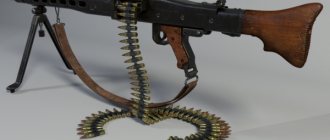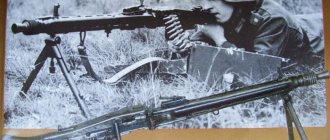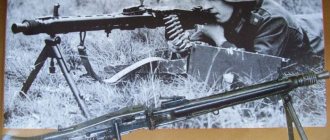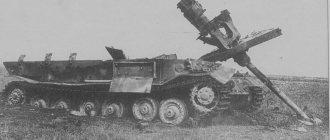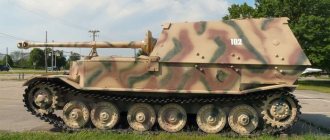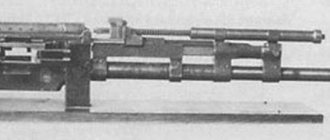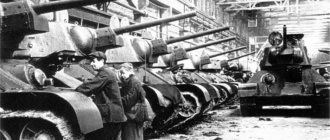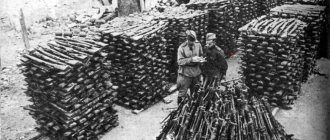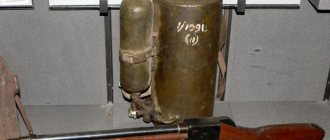TROPHY WEAPONS IN THE WEHRMACHT SERVICE DURING THE WAR YEARS
TROPHY WEAPONS IN THE WEHRMACHT SERVICE DURING THE WAR YEARS: - all six-engine Me-323 transport aircraft converted from gliders were equipped with captured French Gnome-Rһone engines - 110 SB bombers (B-71 in the Czech Republic) produced before WW2 in the Czech Republic under Soviet license were captured by the Germans in 1940 and were used only as auxiliary aircraft or were sold - 94 French LeO 451 bombers captured from the Vichy government in December 1942 were used by the Luftwaffe as transport aircraft - most of the 40 thousand captured Czech CZ-38 pistols were used by the Germans in auxiliary units and very little was sold to Bulgaria - about 100 captured French FKM tanks, which served the Germans as their chassis for conversion into self-propelled guns - 850 serviceable captured French R-35 tanks, due to the impossibility of using them for their intended purpose, the Germans were forced to convert them into tractors and ammunition delivery vehicles - 297 captured French tanks "Somu" S-35 became part of the Wehrmacht - during the occupation of Czechoslovakia, the Germans captured 218 tanks 35 (t) alone - from 06.1941 to 05.1945 the Wehrmacht used more than 300 captured Soviet tanks. - out of almost 250 captured French armored vehicles AMD-35 "Panar178", which entered the Wehrmacht in 1940 under the designation Pz.Spah 204 (f), 43 units were converted into armored tires - captured Soviet tractors "Voroshilovets" in the Wehrmacht received the designation "Stalin 607r" - the captured French submarine Sfax was used in the Kriegsmarine - in 1940, near Dunkirk, the Wehrmacht received 130 thousand English cars as trophies, while the Wehrmacht's own vehicle fleet was 120 thousand (USSR under Lend-Lease for all years received about 376 thousand vehicles, the British supplied the Wehrmacht not badly) - about 300 captured 155mm French Canon de 155 L Mle/1917 GPF guns, receiving the German designation 15.5cm K 418 (f), fought in North Africa, and were also installed in positions Atlantic Wall and coastal defense in Norway - captured Soviet ABC-36 automatic rifles were in service with the Wehrmacht under the name Selbstladegewehr 257 (r) - three captured French Somua S-35 tanks at the beginning of the war stood on the platforms of German armored trains No. 27 and No. 28 - at the end of 1944, the Wehrmacht and SS had more than 250 thousand units of British and American small arms (during the entire period of the war, under Lend-Lease, the USSR received 8 thousand rifles, automatic weapons, incl. installed on various equipment, aircraft, ships, tanks, armored personnel carriers - 131,633 units. Sometimes the question arises: who did the allies supply more to the USSR or Germany during the war? The Soviet KV-1 tanks modernized by the Germans (a commander’s cupola was installed and replaced with a German cannon) were in service with 66tb for special purposes; 8td and 204tp 22td - the Wehrmacht was especially active in using captured anti-tank mines, tank turrets and artillery to strengthen long-term fortifications - in the fall of 1940, 2 captured Polish armored trains entered service with the Wehrmacht, receiving No. 21 and No. 22, respectively - the Germans converted 560 captured Soviet F- guns 22 into anti-tank guns Rak-36(r), and its modernized version F-22 USD was used without modification as a field weapon - the Germans captured from 10 to 12 thousand units of Soviet armored vehicles (tanks, armored cars, self-propelled guns) during the war, but very few of them were used specifically in the SS Viking division - the raised Dutch coastal defense battleships Vliereede and Ijmuinden became respectively the German floating air defense batteries Ariadne and Undine, the captured Dutch armored cruiser Gelderland became the German air defense cruiser. Niobe", the raised destroyers "Van Galen", "Gerald Callenburg" - became the Germans ZH-3 and ZH-1, respectively, the destroyers G-16 and G-12 became the German TFA-9 and TFA-10 - 676 100mm Polish light field howitzers of the 1914/1919 model of the Skoda system and 382 similar Czech guns, 127 Czech 100 mm howitzers, 139 100 mm Yugoslav and Greek howitzers, 40 125 mm Dutch howitzers, 24 120 mm Norwegian howitzers, 284 75 mm Polish guns of the 190 model 2g - 11/30/1940 captured the English submarine "Seal" under the designation UB-1 entered service with the German Navy - the German destroyer "Hermes" - the raised Greek "BasileVus Georgios", the German mines UJ-2106, UJ-2110, UJ-2103, UJ-2101 - these are the raised by the Germans the Greek "Tenedos", "Strimon", "Paralos" and "Korgialenios" - the Danish coastal defense battleships "Peder Skram" and "Niels Juel" raised by the Germans became the German training ships "Adler" and "Nordland", respectively, captured Danish destroyers " Springeren", "Hajen", "Narhvalen", "Dragen", "Hvalen", "Laxen", "Glenten", "Hogen", "Ornen", 5 mines, 5 patrol ships, 6 minesweepers became part of the German Navy. - the Dutch submarine O-8 raised by the Germans was used by them as a training UD-1, O-12 became UD-2, O-27 became UD-5, O-26 - UD-4, O-25 - UD-3 - UC-1 and UC-2 - two former Norwegian boats B-5 and B-6, captured by the Germans in 1940 - the captured Norwegian coast guard battleships Harald Haarfagre, Tordenskjold, respectively, became German floating air defense artillery batteries Thetis and Nymphe", destroyers "Hval", "Delfin", "Brand", "Skrel", "Sild", "Laks", "Snogg", "Trigg", "Kjell", "Lyn", "Blink", "Kvik" ", "Hvas", "Kjaek", "Falk", "Hauk", "Orn", "Lom", "Skarv", "Troll", "Giller", "Odin", "Balder", "Tor" introduced Germans in their Navy, such as “Musketier”, “Kurassier”, “Dragoner”, “Seestern”, “Schildkrote”, “Qualle”, Krocodil”, “Schlange”, “Eidechse”, “Gaselle”, “Grenadier”, "Tarantel", V-6501, "Zick", "Balte", "adm.Deinhard", "Zack", "Troll", "Lowe", "Panther", "Tiger", "Leopard". Also, 6 old Norwegian gunboats, 3 minelayers, 3 minesweepers were captured, renamed and commissioned by the German Navy - the captured Polish minesweepers "Czajka", "Zuraw", "Mewa", "Rybitwa" became, respectively, the German "Westerplatte", "Oxholm" ", "Putzig", "Rixhoft" - 8 German armored trains used materiel from captured Soviet armored trains - the Germans actively used captured artillery from the First World War during the Second World War - French ships captured and completed by the Germans: 6 destroyers (TA1-TA6), 4 escort ships (SG14-SG17), 3 submarines (UF1-UF3, not commissioned)
Soviet trophies from Germany
Almost any war was always waged with the goal of seizing something foreign by force: territory, buildings, people, weapons, livestock and utensils... Everything that could be taken or carried away from the captured territory of the enemy was called trophies. True, sometimes only what was gained in battle is considered a trophy, and in another way - looting, but in war morality is not held in high esteem. Life has simplified this concept, and any booty captured during a victory over the enemy is considered a trophy. It was so in ancient times, and it remains so today.
This was the case during World War II. We are well aware of how the Germans exported their “trophies”. But the reverse process has become somewhat “lost”, or rather not a very popular topic in historiography. It's a shame to mention this. Moreover, the Soviet principles of building society were close to the biblical covenants. And we strictly adhered to the same commandment, “thou shalt not steal,” although more often within the framework of the criminal code.
While the war was going on on the territory of the Union and neighboring, equally poor countries, i.e. almost until the end of 1944, the trophies of the army were weapons, equipment and soldiers' household items. There was simply nothing more to take. And already upon entering the “fat” German territory, the situation changed radically, both for the state and for the military personnel. The level of industrial development and well-being of the population there, for Soviet soldiers, was surprisingly high, unusual for the “eternally hungry and barefoot” Red Army soldiers. As the commissars said earlier - bourgeois. And neither morality nor law could stop the ancient right of the winner to rob the vanquished. In this situation, the most correct solution was the decision of the USSR military command to streamline the process of plunder, thereby leading it. Thus, several ways of confiscating and exporting trophies have emerged.
State trophies
The trophies confiscated in favor of the victorious state were called a clever word - “reparations” (restoration). The forms of reparations were determined at the Yalta Conference in 1945. At the Potsdam Conference in August 1945, it was agreed that the USSR's claims would be satisfied through the withdrawal from the eastern zone of Germany and at the expense of German assets located in Bulgaria, Finland, Hungary, Romania and Eastern Austria. To collect goods in the USSR, at the beginning of 1943, the Main Trophy Directorate was formed, whose units identified, recorded, collected, stored and exported captured and abandoned domestic weapons, property, fodder and scrap metal from the liberated territories. So that the trophies would not “stick” to the hands of collectors and keepers, the trophy brigades had their own counterintelligence departments “SMERSH”, which put more than one thousand “trophy takers” on trial and execution. The scale of work of trophy teams is truly gigantic.
German rifles collected by “trophies”.
Tank cemetery of "trophy winners".
And this is also “trophy-winning” goods.
During the war they collected 24,615 German tanks and self-propelled artillery units, over 68 thousand guns and 30 thousand mortars, more than 114 million shells, 16 million mines, 257 thousand machine guns, 3 million rifles, about 2 billion rifle cartridges and 50 thousand cars. The total weight of captured metal delivered from front-line areas for recycling was about 10 million tons.
Dismantling of German equipment for export to the USSR.
German machines received as part of reparations.
Basically, 21,834 wagons of clothing, baggage and household goods were exported from Germany; 73,493 carloads of building materials and “apartment property”, including: 60,149 grand pianos, upright pianos and harmoniums, 458,612 radios, 188,071 carpets, 941,605 pieces of furniture, 264,441 pieces of wall and table clocks; 6,370 wagons of paper and 588 wagons of various tableware, mainly porcelain; 3,338,348 pairs of various civilian shoes, 1,203,169 women's and men's coats, 2,546,919 dresses, 4,618,631 items of underwear, 1,052,503 hats; 154 wagons of furs, fabrics and wool; 18,217 wagons with agricultural equipment in the amount of 260,068 units; 24 carriages of museum valuables; ferrous, non-ferrous and other metals in industrial form 447,741 tons worth 1 billion 38 million rubles at state prices; gold, silver, platinum - 174,151 kilograms; grain products - 2,259,000 tons; meat products - 430 thousand tons; fish products - 10 thousand tons; fats - 30 thousand tons; oilseeds - 35 thousand tons; sugar - 390 thousand tons; tobacco - 16 thousand tons; potatoes and vegetables - 988 thousand tons; 20 million liters of alcohol; 186 wagons of wine... At the final stage of the war, an important task of the captured service was also the collection of historical and cultural treasures in the liberated territory. According to the German side, in Russia and the CIS countries there are currently about 200 thousand museum exhibits taken out after the war, two million books and three kilometers of folders with archives.
At the end of the war, 2,885 factories, 96 power plants, 340 thousand machine tools, and 200 thousand electric motors were transported to the USSR. After the war, the German military and civilian fleets, some aircraft, and railway rolling stock were divided, incl. and subway cars.
The cost of seizures from the Soviet occupation zone and the GDR amounted, according to estimates of the Federal Ministry of Internal German Relations, to a total of 15.8 billion dollars, which amounted to 12% of the damage caused by the war to the Soviet Union (128 billion dollars). According to Poles, only $3 billion worth of goods were exported. According to Soviet experts, the Germans compensated only 4% of the total amount of damage caused.
Intellectual trophies
In addition to the export of material assets, reparations must also include the labor of 2 million German prisoners of war who worked on Soviet construction sites and the creative potential of German scientists. In June 1945, 39 German nuclear physicists were transported to a research center near Sukhumi, one of whom, Professor Riehl, subsequently received the title of Hero of Socialist Labor. In total, about 2 thousand people related to nuclear research were taken out of Germany. After testing the Soviet atomic bomb, they were returned to Germany in the 1950s.
The first Soviet atomic bomb.
Sergei Korolev successfully worked at the German missile center on the island of Peenemünde, however, after the Americans had already removed all the most interesting things from there. But Korolev also managed to deliver 150 V-2 turbines, 20 sets of graphite rudders and other equipment to the USSR. In May 1946, more than 150 German rocketry specialists arrived in the USSR, along with the families of about five hundred people. Among them there were 13 professors, 32 doctoral engineers, and more than a hundred certified engineers.
Tu-95 with engines created by the Germans.
In Kuibyshev, at Experimental Plant No. 2 in the village of Upravlencheskiy, about 770 German specialists from BMW lived and worked. They created a prototype engine, which after modification was called NK-12 and was used for the Tu-95 strategic bomber.
German radar specialists worked at KB-1 in the period 1945-1953. The idea of using anti-aircraft guided missiles arose in Germany at the end of World War II, methods of protection against aviation bombing were sought, and then the first complexes with location surveillance and manual control of missiles appeared. The post-war leap in the development of Soviet radar technology was based almost entirely on German inventions.
Schmeisser assault rifle, known as the Kalashnikov assault rifle (AK-47).
The most famous German development of the gunsmith Hugo Schmeisser in the USSR is the StG 44 assault rifle, later called the Kalashnikov assault rifle. Schmeisser, along with German specialists and documentation for the rifle, was forcibly taken to the Soviet Union, where he was engaged in fine-tuning it and establishing mass production.
In total, about 10 thousand Soviet specialists sent to Germany and countless of their colleagues at home were engaged in the study of captured technologies. At the same time, as researcher Mikhail Semiryaga writes in his book: “We looked everywhere for designers of V-Au, jet aircraft, heavy tanks, and were not interested in what related to the production of goods for the people.”
Use of exported trophy goods
A trophy piano is in one of the Moscow apartments today.
It would be naive to believe that with such a gigantic transfer of valuables from Germany to the Soviet Union, everything will end up in the people's bins and for the people's needs. It is clear that high military officials, organizing the collection and dispatch of German goods, under the supervision and participation of SMERSH, selected a little “exclusive” for themselves and their superiors. But more on that later. The main consumers of “good” were not at the front, especially in Germany, but sat thousands of miles away in quiet, modest offices. These are, first of all, the party and Soviet apparatus, the military command, and even trade union bosses. Again, it would be naive to think that in a country with increased social justice, officials would shamelessly appropriate cars, furniture and carpets, silverware and china, fur coats, shoes, suits, underwear... Not at all! They bought it in special distributors - such large and secret warehouses where mortals were not allowed to go. They bought for pocket change something that cost thousands and tens of thousands of freely convertible currency. True, this process was organized very specifically, focused on the status of the official. At first, German goods were “sorted through” by Muscovites - the central apparatus of the party, the government, ministries and departments. Then it was distributed among the republics and regions. There the process was repeated - senior bosses went through, then junior ones, and so on through the power hierarchy. “Unliquid” went down to areas that, despite their poverty, were glad to have at least something. You ask: what did the people get? And the people got the lion’s share of what was exported - plants, factories, equipment, machines, livestock... And of course, some of the “imported garbage” left behind by the district authorities. But since there was little left that was unnecessary, it was solemnly distributed among sanatoriums, children's boarding schools, clubs, theaters... So that everyone could use it and feel like winners. And pianos, billiard tables, heavy chandeliers hung in them for 50-70 years, and even paintings were in provincial museums. In general, the goods were distributed quickly and fairly.
Soldiers' trophies
We noted above that the process of capturing trophies could not be stopped - neither with a word nor with a bullet. And not because thieves were born ugly, not because they were poorer than church mice, but because the laws of war are higher than human laws and norms. Since time immemorial, the victorious army was given time to plunder the vanquished. And this happened in wild tribes, and in Roman legions, and in knightly cohorts. It's in the blood of a warrior, it's a law of nature.
A German straight razor is a typical trophy for any soldier.
A German trophy watch is the dream of every soldier.
Not a single soldier could do without a German folding knife.
For some reason, German gasoline lighters always worked better than Soviet ones.
A silver German cigarette case is not just a trophy, but a valuable trophy.
At first, on their own land, the soldiers' trophies were military equipment: German boots, a lighter, a cigarette case, a folding knife, a straight razor, a flask, a flashlight, a pistol. Ordinary wristwatches were considered of great value, since in the USSR they were a rarity, worthy of a select few. They were more significant than any medal; they were awarded to commanders. Since then and today, the commander's watch has been one of the highest military awards in the post-Soviet space. And the Soviet quality of watches was very mediocre. The officers preferred German tablets, binoculars, compasses, staff stationery, and all the soldier’s equipment described above. All this simply did not exist in the Red Army, and what was there was of disgusting quality.
German pencils are the favorite trophy of any staff officer.
The best gift for an officer is a German captured tablet.
Captured binoculars are an irreplaceable thing for an officer.
As it advanced across Europe, the Red Army began to transform from military units into a gypsy camp. At first, the convoys were filled with all sorts of “randomly found” belongings, then trucks, tanks and self-propelled guns took half as much cargo and ammunition. And the soldiers with their overflowing duffel bags began to look like pack camels.
A captured SS ceremonial dagger, obtained in battle. Beautiful in appearance, useless in practice.
Obtaining trophies through exchange.
Trade with allies is also a source of trophies.
Obtaining trophies by force.
Loot by robbery. Former Ostarbeiters looted a liquor store.
Red Army soldiers who managed to “shop for goods.”
Trophy accordions are the prey of the chosen ones.
After the war, the captured “horse” could be redeemed.
Each has its own trophy - some have a watch, some have a car.
The problem was solved by the State Defense Committee by resolutions No. 7054 of December 1, 1944 and No. 7192c of December 23, 1944, which allowed well-serving Red Army soldiers, non-commissioned officers and officers, as well as generals of active fronts to send personal parcels to their homes. Parcels could be sent no more than once a month in the following sizes: for privates and sergeants - 5 kg, for officers - 10 kg and for generals - 16 kg. Subsequently, the resolution of the USSR NPO Order No. 0409 of December 26, 1944 was “corrected” in the direction of tightening, and the procedure for organizing the reception and delivery of parcels to the rear was determined. In particular, parcels were allowed to be sent only with the permission of the unit commander in each case. Parcels from Red Army soldiers and non-commissioned officers are accepted free of charge. Officers and generals were charged for shipping - 2 rubles per kilogram. It was forbidden to send in parcels: weapons, items of military equipment and uniforms of the Red Army, flammable, explosives, toxic substances, medicines, all kinds of liquids, perishable foods, written enclosures, money in various currencies, all kinds of literature and other printed material. Parcels that were not delivered to the addressees, due to their absence, were not returned to the senders, and after the expiration of the 2-month storage period at the points of issue, they were transferred for sale to the state trading network for sale at state prices to disabled people of the Patriotic War and the families of front-line soldiers.
Military postal service.
According to reporting data, the flow of parcels was not so large as to paralyze the military post office, but sufficient for its staff to increase several times, and its transport five times. The approximate volume can be estimated from such data. Every day, four trains of 60 wagons with parcels left Germany. Sometimes cases were “revealed” when soldiers and officers sent not one parcel per month, as was allowed, but 3-7. However, there were many messages, but few “revelation”. Among the popular shipments were: fabrics, shoes, clothes and not always new ones, sugar, soap, sewing needles, nails, notebooks, pencils. They also sent American dry rations, consisting of canned food, biscuits, powdered eggs, jam, and even instant coffee. The Allied medicinal drugs, streptomycin and penicillin, were also highly valued.
Orders of some front commanders allowed military personnel, including the wounded, who were being treated, to be given free of charge captured goods from army warehouses to send parcels home. For example, on the 1st Belorussian Front they were given out once a month: a pair of socks, stockings, gloves, women's shoes and underwear, lipstick, a comb, toothpaste and a brush, cologne, pencils (6 pieces), buttons (12 pieces). They also gave out 1 kg of sugar and 200 grams. soap Similar things happened on the 1st Ukrainian Front. This practice was introduced to be able to send parcels to the rear, since there were only 30% of the soldiers on the front line from the entire number of fronts.
In some units, the command practiced sending parcels to the relatives of the dead and wounded, which was positively perceived by both the servicemen themselves and the population of the Union.
From reports of the military censorship and the military prosecutor's office, we know of frequent cases of theft of the contents of parcels by military postal workers. The situation went so far that this issue came under control of the Central Committee of the All-Union Communist Party of Bolsheviks. The punishment for theft was increased to 5 years in camps, control was strengthened, but theft did not stop.
On June 9, 1945, by resolution No. 90360, the State Defense Committee allowed all generals of the Group of Soviet Occupation Forces in Germany to be given ownership, free of charge, from among captured ones, of one passenger car. At the same time, fuel, spare parts and drivers were provided at the expense of the army. In addition, the generals were allowed to purchase a grand piano, a radio, cameras, hunting rifles, and watches for a fee. Generals and officers could buy carpets, tapestries, furs, tea and dining sets, cameras and consumer goods. Officers were given captured motorcycles and bicycles free of charge.
By Decree of the State Defense Committee of June 23, 1945 No. 9054c, during the demobilization of older personnel of the active army, the following was allowed:
- free issuance of some household items from captured property as gifts to Red Army soldiers, sergeants and officers discharged after demobilization who performed their service well, such as: bicycles, radios, cameras, watches, musical instruments, razors and other items available in available in front-line and army trophy warehouses. Gifts could include cotton, wool, cloth or silk fabric, men's suits, men's or women's coats, women's dresses, women's or men's shoes, various items of children's clothing;
— sale for cash to discharged military personnel of captured goods and consumer goods at the rate per person: civilian fabrics no more than 6 meters, outerwear, civilian underwear and knitwear.
Senior and senior officers could also “buy” a car.
Guard Major and his Opel.
And the “purchase” documents are in perfect order.
To give an idea of the prices for selling goods to military personnel, we present the following data. The major received 1,500 rubles a month and the same amount in occupation marks at the exchange rate. In addition, officers from the position of company commander and above were paid money to hire German servants. The car cost 2,500 marks, or 750 Soviet rubles. With such a size of monetary allowance, it is not very hard to believe in the continuous looting of Soviet soldiers, which is still mentioned in the Western press. In addition, the servicemen were paid their debts in salary for past times, and they had plenty of money even if they sent home a ruble certificate. Therefore, taking the risk of “getting caught” and being punished for looting was simply stupid and unnecessary. And although there were, of course, plenty of greedy individuals, they were the exception rather than the rule.
Knowing the agility of Soviet customs officers and “other controllers,” the State Defense Committee exempted military personnel discharged from the Red Army from customs inspection when crossing the State border. Therefore, the soldiers carried as much goods as they could carry on themselves on completely “legal” grounds. In addition, everyone who was fired had documents for all the gifts and acquired property, because already in the Union no less nimble employees from the NKVD were waiting for them to fight the plunderers of Soviet property.
Certificate of purchase of a trophy bicycle.
Naturally, when moving home during demobilization, officers and soldiers were not allocated luggage space. They found a simple way out - they tied all the large items into several “floors” on the roofs of the heated vehicles, turning them into gypsy wagons. The nimble Poles found a way to “rob the loot” on their territory with impunity - they stole things while the train was moving with ropes and hooks. This did not always work out and trains arrived at the next station hung with ropes, like a New Year's serpentine.
The volume of German goods exported by soldiers cannot be estimated. It is impossible to determine which part of the goods sent to the USSR were trophies in the strict sense of the word, and which was exchanged with the local population for food and smokes. It should be noted that by May 1945 there were 11.5 million Soviet troops in Europe, and none of them returned empty-handed. From a human, Soviet point of view, the export of goods was absolutely correct and, according to wartime laws, completely legal. The exported German “junk” was a meager compensation for the suffering and grief brought by the Nazis to Soviet citizens, but all this looked very wild in the eyes of the defeated Germans, and even more so in the eyes of the allies. The Red Army demonstrated to the whole world the incredible poverty of the victorious people.
Literature and memoirs of contemporaries have brought to this day a lot of sad and curious episodes involving the use of exported goods. Following the Soviet habit of stocking up on whatever was given, someone brought home a whole bag of bicycle bells. Officers' wives came to the theater in nightgowns with flounces, mistaking them for chic evening dresses. Some colonel brought a suitcase of patent leather low shoes, which began to fall apart after an hour of walking. It turned out that, due to his lack of knowledge of the language, he had grabbed shoes for the dead from a funeral supply store, which had been made into living threads. Funny! But let those who never lived under Soviet deficit conditions laugh at this. The state that brought its defenders to this should be ashamed.
General's trophies
Trophy clothes for general's wives.
While the soldiers were content with what fit in their duffel bags, the generals loaded the captured property into wagons. And not only those donated by the command or purchased in warehouses. Stalin turned a blind eye to the self-supply of the nomenklatura in uniform, but took advantage of the opportunity to keep everyone on the hook and selectively punish those undesirable. Several cases of this kind help to illustrate the scale of the enrichment.
As soon as Marshal Georgy Zhukov, in the opinion of the leader, thought too much of himself, he was recalled to the Union from the post of commander-in-chief of the Soviet occupation zone, accused of money-grubbing and forced to write humiliating explanations to the party commission headed by the Secretary of the Central Committee of the All-Union Communist Party (Bolsheviks) Andrei Zhdanov. In January 1948, MGB operatives conducted secret searches at Zhukov’s apartment and dacha and found 70 gold jewelry there, incl. with diamonds, 30 kg of silver jewelry, 194 pieces of valuable furniture, 483 skins of fur-bearing animals, 3.7 thousand meters of fabric, 44 carpets and tapestries, 55 museum paintings, 7 boxes of crystal and porcelain, 740 pieces of silverware and a large amount of ornate published books in German, which neither the marshal nor his relatives spoke. However, during the search, the security officers were unable to find the treasured suitcase of Zhukov’s wife, who took it with her on all her trips. It was assumed that her most expensive jewelry was there. Or maybe she was carrying medicine for the marshal... So the secret of the suitcase remained unsolved, although Abakumov reported about it in writing to Stalin and suggested that he demand voluntary extradition from Zhukov. Today, fans of the marshal say that this was political persecution. They say they wanted to discredit the Marshal of Victory. And that's all true. Only the inventory of the property is genuine, and the property is real.
The head of state security in the Soviet occupation zone, the future chairman of the KGB, Ivan Serov, settled in the former Goebbels mansion. By personal authority, he ordered that 80 million Reichsmarks found in the basements of the Reichsbank not be handed over to the treasury, and while this currency was still in circulation, he managed to uncontrollably spend 77 million on operational needs.
Member of the Military Council (political commissar) of the Group of Soviet Forces in Germany, Lieutenant General Konstantin Telegin, received 25 years in the camps for sending a whole train of trophies home to the Novosibirsk region. Apparently, the “parcel” was not the first, since investigators seized from him 16 kilograms of silver items, 218 wool and silk cuts, 21 hunting rifles, antique porcelain, French and Flemish tapestries of the 17th-18th centuries.
Lieutenant General Vladimir Kryukov and his wife, singer Lydia Ruslanova, were confiscated from two Mercedes and a Horch-951 (the same one that Goering and Rosenberg drove), 132 paintings by Russian artists previously stolen by the Nazis from Soviet museums, 107 kilograms of silver items, 35 antique carpets, diamonds, tapestries, antique sets, furs, marble and bronze sculptures, 312 pairs of shoes, 87 suits, as well as... 78 window latches, 16 door locks and 44 bicycle pumps.
The head of the Berlin operational sector of the Ministry of Internal Affairs, Major General Alexey Sidnev, appropriated about a hundred gold and platinum items, among which was a unique handbag made of gold, as well as 600 silver forks and spoons, five unique tapestries, 50 carpets, 32 fur coats, 1,500 meters of fabric, 296 items of clothing, 78 pairs of shoes, 405 pairs of ladies' stockings, 178 fur skins.
The current “lawyers” of these generals see the reason for their exposure as being close to Zhukov, although they do not deny that the generals have lost their sense of proportion. But we are not talking about closeness to Zhukov, but about banal money-grubbing and theft. Like, they didn’t touch others like them. And so it is. Although the list of convicted trophy lovers includes generals of SMERSH, the military prosecutor's office and the NKVD. And even the legendary leader of SMERSH, Viktor Abakumov, was found to have trophy gold, diamonds, paintings, tapestries, plus a suitcase of German suspenders. But the main reason lies not in the disgrace of the leader, but in something completely different. In the admission to power of ordinary, trivial cattle. After all, Zhukov did not intend to sew 1000 suits, and Ruslanova would not have been able to stand up if she had put on all the “acquired” diamonds. And Abakumov couldn’t put on a suitcase of suspenders at once. But fastness, it’s in the blood, doesn’t go away and can’t be treated. For example, in 1937, Stalin destroyed the “best” of the army, which were also not of noble origin, but in a short time turned into masters. And they lived in lordly mansions, and had servants, and provided them with cars, and government-issued food and clothes, and vacationed at resorts... But instead of serving the people, they put the people in service.
They say correctly that several dozen generals were tried. But during the war there were more than 6 thousand generals alone. There were also colonels, and lieutenant colonels, and majors... And the goods brought from Germany, not only their children, but also their grandchildren lived. You will say: you can’t paint everyone with the same world, there were others. Yes! There were a few exceptions. Stalin and his son Vasily, for example. Khrushchev, Malenkov, Mikoyan... Most are not military. They were bloodsuckers, but not marauders. Somehow they understood that the people were barely surviving after the war, naked, barefoot, hungry.
A natural question arises: why did the leader of the peoples, seeing money-grubbing among the military, not nip it in the bud? The answer is simple. Stalin was afraid. I was afraid that the military, who had lost fear in the war, would no longer accept the conditions of 1937. They saw a different life in Europe, they knew an alternative to the Soviet system, which, as it turned out, was not the best. And there were leaders among the military, popularly beloved marshals and generals. They could have swept away the police power in an instant. So Joseph Vissarionovich cajoled the front-line soldiers with handouts and “covered up” the generals with trophies.
This is the story that happened to the German trophies of the victorious people. Some kind of senseless, deceitful, mocking of these people themselves.
And in conclusion. Without justifying the Red Army for its “junk,” I would like to note that the allies behaved in Germany no better than the Soviet liberators. American soldiers were so keen on collecting “souvenirs” from the population that they literally combed residential areas. Moreover, they were not interested in stockings and dresses. It turned out that among them there were so many connoisseurs of antiquities and antiques, as if all of them had worked in museums before serving in the army. British soldiers were more "advanced". They “collected” machines and equipment, industrial batches of goods, and especially valuable raw materials. The descendants of aristocrats, after all, were the business genes that manifested themselves. And only when there was no place to send the wounded on the ships sailing to Britain (and there were up to a thousand of them daily) did the joint Allied command begin to restore order by reserving a certain number of ships for military needs. The French, as experts in winemaking, were engaged in wine - returning to their homeland millions of bottles of wine exported by the Germans. The Poles were omnivores, and “picked up” everything that was left after the Americans, British and French. Therefore, even today at flea markets in Poland you can buy almost any household item made in Germany from that period - from a coffee grinder with sugar tongs to a latch with screws.
Based on materials from the sites: https://www.perspektivy.info; https://istorya.ru; https://e-news.su; https://crime.in.ua; https://www.crimea.kp.ru; https://novosti-n.org.
All publications
Share in:
Great Britain
Great Britain
The first British tank to fall to the Germans in September 1939 was the Matilda I, captured in Poland. This tank, handed over to the Poles for familiarization and testing, eventually ended up at the Wehrmacht's Kummersdorf testing ground.
Matilda I and Matilda II tanks fell into German hands in relatively large quantities after the evacuation of the British Expeditionary Force from the European continent. Subsequently, Matilda tanks became trophies of the Wehrmacht in Africa and on the Eastern Front. These vehicles were designated Pz. 748(e). Their use was sporadic. Nevertheless, in Africa, as part of a company of captured tanks of the 8th Tank Regiment of the 15th German Tank Division, for example, seven Matilda tanks were operated during the summer of 1941. At the same time, five Matildas were in service with the 5th Tank Regiment of the 21st German Tank Division. For several years, the Matilda tank was part of the 212th German tank battalion on the island of Crete.
There is only one known case of converting a Matilda tank into a self-propelled gun. At the end of 1942, the tank at the disposal of the Hochsee-Lehrkommando was rearmed with a German 50 mm tank gun. At the same time, the turret was dismantled, and the gun was installed on the roof of the hull behind a box-shaped shield. To the left and right of the gun, two MG08/15 machine guns were mounted on the shield, intended for air defense and close-in defense. This vehicle was used during combat training missions.
This Matilda tank, destroyed by British artillery, was part of the 8th German Tank Regiment. On May 27, 1941, the Germans captured seven tanks of this type, three of which were suitable for further use. North Africa, 1941
Tanks of the Afrika Korps: Pz.lAusf.B and captured Matilda. 1941
The rest of the British tanks, both infantry and cruising, which became trophies of the Wehrmacht, were used in very limited quantities - mainly due to the lack of spare parts for repairs, and often the time to carry them out. The latter circumstance was characteristic, for example, of the Afrika Korps.
The Germans actually had the opportunity to “process” English trophies only once - in 1940. According to German data, in France the British lost 24 cruiser tanks Mk I and Mk ICS, 31 Mk II, 38 Mk III and 65 Mk IV. Some of them were technically sound, others required minor repairs. Formally, all these vehicles were adopted and they were designated according to the end-to-end system of Wehrmacht vehicles. However, not a single captured vehicle of the first three brands entered the troops. Several units were transferred to the Kummersdorf test site for testing, including for testing new types of anti-tank weapons. The fate of the captured Mk IVs turned out somewhat differently. Six vehicles (of which only one was operational) were placed at the disposal of the Armament Directorate. But another nine Mk IVs made up a company of captured Beutepanzer-Kompanie (e) tanks, which in 1941 was included in the 100th flamethrower tank battalion.
Captured "Matilda", converted into a self-propelled gun, armed with a 50-mm tank gun
The captured cruiser tank Mk IVA brings up the rear of the 100th Flamethrower Tank Battalion. Eastern Front, summer 1941
One of the “crusaders” of a company of captured tanks of the German Afrika Korps. 1942
Churchill III tank with a German crew. 23 Churchill tanks were captured by the Germans while repelling the British raid on Dieppe on August 19, 1942. Most of them could not be restored, but several vehicles were repaired and put into operation by the 81st company of captured tanks. At the end of 1942, the company joined the 100th Tank Regiment, where two Churchill IIIs served until the end of 1943
105-mm self-propelled howitzer leFH 16 on the chassis of a captured English light tank Vickers Mk VI
Another vehicle on the same chassis is an ammunition transporter.
In its composition, former British “cruisers” crossed the border of the USSR on June 22, 1941. However, their battle journey across Soviet soil was not long. A month later, not a single vehicle was on the lists of the 100th Flamethrower Battalion.
The first Crusaders were captured by the Germans in June 1941 during Operation Battleaxe. Mostly these tanks were abandoned by the British due to technical faults. After repairs, they became part of the special forces battalion of the Tank Army “Africa” (Panzer Abteilung zbV Panzer-Armee Afrika), formed in February 1942, fully equipped with captured tanks. During 1942, this unit constantly had a platoon of Crusader tanks. Separate tanks of this type were used by the 5th Tank Regiment and the 605th Anti-Tank Division. The battalion was armed with 12 Valentine tanks. The platoon of captured tanks of the 605th Anti-Tank Division used five more Valentines. The losses of English captured vehicles were able to be replenished, since North Africa was the theater of fairly massive use of tanks of this type. It is interesting to note that sometimes units missing during the repair of English tanks were delivered from Germany. First of all, we are talking about weapons and radio stations. In this case, a fleet of captured British tanks captured in France in 1940 was used as a “donor”.
Captured British armored car Daimler Dingo Mk I in service with the Wehrmacht. Eastern Front, 1942
Humber Mk I armored car captured by the German Afrika Korps in 1942
Unlike French combat vehicles, British tanks were not converted en masse by the Germans. The only exceptions were the Mk VI light tanks: apparently because these vehicles made up the majority in the tank fleet of the British Expeditionary Force, and the Germans captured them more than others. It was on the chassis of the Mk VI light tanks that the first Selbstfahrlafette (self-propelled carriages) of the Wehrmacht were created. Their production was carried out by the division of Alfred Becker, already mentioned above. This officer began the Western Campaign with the rank of captain, commander of the 12th battery of the 227th artillery regiment. He distinguished himself by the fact that after the capture of Holland, using captured trucks, he transferred his battery from horse-drawn to mechanical. After the surrender of France, he organized the production of self-propelled guns on the basis of his unit. Naturally, his work would have been impossible without the support of his command.
Two types of self-propelled guns were made on the chassis of the Mk VI light tanks: the first was armed with a 105-mm light field howitzer leFH 16 and the second was armed with a 150-mm heavy field howitzer leFH 13. In both cases, obsolete artillery systems from the First World War were used. They were installed in a wheelhouse open at the top and rear, located in the rear of the tank hull, in the place where the turret had previously been located. A total of 12 self-propelled guns with a 105-mm howitzer and six with a 150-mm howitzer were manufactured. These vehicles entered service with the 15th battery of the 227th artillery regiment and the newly formed 1st battery of assault guns within this unit.
Wehrmacht trophy - South African armored car Marmon-Herrington Mk III. On the hood of the car there is a so-called Fliegersichttuch - “aviation identification panel”
Captured British soldiers guarded by captured Marmon-Herrington Mk II (foreground) and Mk III (background) armored cars. The Mk II armored car is armed with a 25 mm French anti-tank gun
In addition to self-propelled guns, four forward artillery observer vehicles and 12 ammunition carriers were manufactured on the basis of the Mk VI tank. With this composition, this regiment left for the Eastern Front in October 1941. He received his baptism of fire in the Leningrad region, and, according to the Germans, self-propelled guns were successfully used even for shooting at Soviet tanks. Self-propelled guns on English chassis fought on the Eastern Front until the end of 1942, when the last of them were lost.
On a trial basis, Becker's unit created a self-propelled gun armed with a 75-mm Pak 40 anti-tank gun on the chassis of an English Mk VI tank.
In 1940, the first English armored vehicles were captured in France, but subsequently they were not used by the Germans in the European theater of operations, with the exception of the Daimler Dingo Mk I (in the Wehrmacht le Pz.Sp.Wg. Mk I 202 (e). En masse Captured English armored vehicles were used only in North Africa, and most often immediately after capture - while there was enough engine life, spare parts, etc.
Captured armored car Marmon-Herrington Mk II, used in the Wehrmacht as a command vehicle
Armored English staff bus AES Dorchester, used for its intended purpose by the headquarters of the commander of the German Afrika Korps, General E. Rommel. 1942
Rommel's captured staff bus received its own name "Moritz", which was painted on the sides of the hood
3.7-st-Cancer 36 auf Selbstfahrlafette Bren-Carrier(e)
German paratroopers on a captured English Bren-Carrier armored personnel carrier. Crete, 1941
These were mainly Marmon-Herrington armored cars of various modifications and Humber. The headquarters of General E. Rommel operated two AEC Dorchester armored buses.
Various German units were armed with the English Universal Carrier tracked armored personnel carriers (gepanzerter Maschinengewehrtrager Bren 731(e). Some of the vehicles were rearmed or re-armed. The best known are the variants with the 20-mm automatic anti-aircraft gun Flak 38 and the 37-mm anti-tank gun - Rak 35/36 Both were installed in the back of an armored personnel carrier with their own standard shields. In the 3rd Motorized Division of the Wehrmacht, several armored personnel carriers were armed with a package of three barrels of an 88-mm rocket-propelled grenade launcher (8.8 cm Raketenpanzerbuschse 43). In addition, captured English armored personnel carriers were used in the Luftwaffe for clearing snow from runways. For this purpose, the vehicles were equipped with a bulldozer blade. In various police forces they were used for patrol duty.
Return to section • Uniforms of the German armyWith the development of the Wehrmacht, the elements of the uniform of soldiers and officers also changed. However, as in all armies, the process of obtaining new uniforms and equipment extended from two weeks to two years. In addition, individual soldiers and especially officers often wore the old uniform, with which they often had sentimental memories or was simply better than the new one in quality. This attitude towards uniforms gave the owners a touch of individuality and once again emphasized the combat experience of veterans. The Wehrmacht order of July 10, 1942 consolidated the existing situation - the old uniform could be worn throughout the war until completely worn out.
The most visible symbol of the Wehrmacht was the breast eagle, Hoheitsabzeichen, which military personnel of all ranks wore above the flap of the right breast pocket. A version of the badge for the ground forces was approved on May 17, 1934, and introduced as an element of the uniform on May 1, 1934. The emblem represents an eagle with outstretched wings, clutching a circle with a swastika in its talons. In other branches of the armed forces there were various variations of the emblem; in the SS troops an eagle with a swastika was worn on the left sleeve.
Various variations of the new uniform of the ground forces began to appear immediately after the regulation of new uniforms on April 8, 1935.
Uniforms, symbols and insignia were developed taking into account the traditions of the four predecessors of the Wehrmacht: the National Army (Reichsheer) of the Second Reich (January 18, 1871 - November 11, 1918); peacetime armies (Fridensheer, November 11, 1918 - March 5, 1919); Provisional National Armed Forces (Vorlaufige Reichswehr, 6 March 1919 - 31 December 1920); National Army of the German Republic (Reichsheer, erroneously called Rcichswehr, January 1, 1921 - March 15, 1935).
By the end of 1935, basic uniform styles had been established. The base color of the uniform was gray-green, introduced on July 2, 1929. Traditionally, but not entirely accurately, this color is called “field gray” (feldgrau); initially, under the designation “medium gray”, it was introduced on February 23, 1910. From June 29, 1935, the outer trim of the uniform began to be made of thin felt of a bluish gray-green color; as a rule, felt was also used to make colored edgings of the military branches . The Reichswehr uniform of 1929, which had a darker gray-green color, was canceled in 1937, but was occasionally seen in 1940.
In 1936, a new type of jacket appeared under the marking M36. A characteristic feature of this model is the dark blue collar. In 1940, due to the simplification of uniform manufacturing technology, the new M40 model entered the troops. This model is almost identical to the M36 field jacket. Despite the introduction of other (simplified) models, the M36 field jacket was produced until 1945.
An order of April 1935 established ten uniform options for officers: • two options for ceremonial uniforms for parades on official occasions; • exit form for semi-official occasions; • everyday uniform was worn during training and in the barracks; • field uniform; • sports uniform.
Non-combatant officers and military personnel of other ranks had nine uniform options; they did not have a full ceremonial uniform, but they were issued a set of work clothes. Some uniforms for officers and military personnel of other ranks were made according to a single standard, while others were different.
The next changes to the uniform were introduced by order of December 28, 1939, which simplified the existing regulations for wearing uniforms during wartime. The casual version of the uniform could be worn on most formal and semi-formal occasions, with the field uniform becoming the most common and worn by rear and front-line units most of the time. Units of the reserve armies were allowed to use captured uniforms from the capitulating armies of Austria, the Czech Republic, Holland, and France; they were even allowed to wear British uniforms, somewhat adjusted to German standards.
